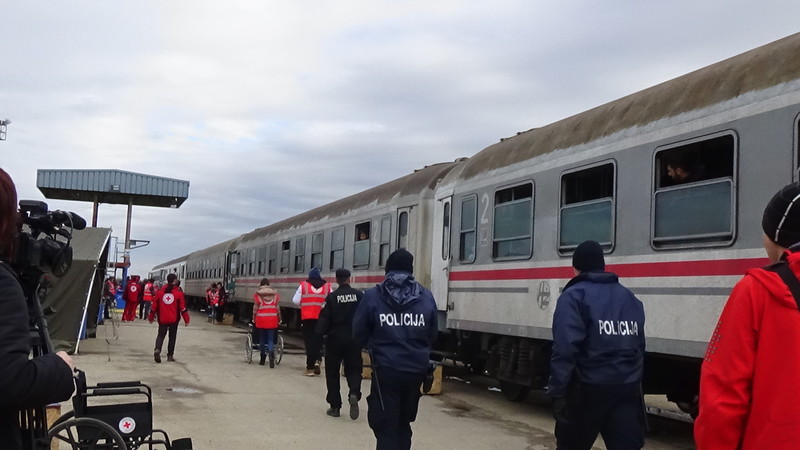Mobile Detention
The Balkan corridor, which was established in the fall of 2015 as a response to the long summer of migration and the autonomous mass movement of refugees from Greece to the center of Europe, from Croatia further west, functioned not only as one of the forms of “governing mobility through mobility ” (Tazzioli 2020) but also as a special type of detention. From the time when the movement was redirected towards Croatia, and especially with the opening of the camp in Slavonski Brod and the establishment of a special line from Šid in Serbia to Dobova in Slovenia and further on towards Austria (Lunaček Brumen and Meh 2016; Hameršak and Pleše 2017; Roth et al. 2020), the mass movement of migrants was isolated from the surrounding territory, and it was no longer possible to join the movement independently after its flow left Serbia, nor to leave it except in extraordinary cases (for hospitalization, an asylum application, etc.). Thus, the western section of the corridor is sometimes described as a mobile detention in which profiling was conducted and which consisted, on the one hand, of locked trains, buses and convoys escorted and directed by the police with the assistance of humanitarian actors and, on the other hand, of newly established transit camps where refugees were registered (Hameršak and Pleše 2017: 23). Like many other elements of the corridor, this detention had no basis in national nor international legal frameworks (Kogovšek Šalamon 2016: 44-47), and it can also be understood as a specific mobile linear type of an interiorized border of the European migration regime (Hameršak and Pleše 2017: 15).

5/3/2022
Literature
Hameršak, Marijana and Iva Pleše. 2018. "Confined in Movement. The Croatian Section of the Balkan Corridor". In Formation and Disintegration of the Balkan Refugee Corridor. Camps, Routes and Borders in Croatian Context. Emina Bužinkić and Marijana Hameršak, eds. Zagreb and München: Institute of Ethnology and Folklore Research, Centre for Peace Studies, Faculty of Political Science University of Zagreb – Centre for Ethnicity, Citizenship and Migration, bordermonitoring.eu e.V., 9-41.
Kogovšek Šalamon, Neža. 2016. "Legal Implication's of 'Humanitarian Corridor'“. In Razor-Wired. Reflections on Migration Movements through Slovenia in 2015. Neža Kogovšek Šalamon and Veronika Bajt, eds. Ljubljana: Peace Institute, 39-49.
Lunaček Brumen, Sarah and Ela Meh. 2016. "'Vzpon in padec' koridorja. Nekaj refleksij o spremembah na balkanski migracijski poti od poletja 2015“. Časopis za kritiko znanosti 44/264: 21-45.
Roth, Birgit, Petra Leschanz and Sylvia Altenbacher. 2020. Border Crossing Spielfeld. Grenzerfahrungen. Border(line) Experience. Graz: Südwind-Verlag Graz.
Tazzioli, Martina. 2020. "Governing Migrant Mobility through Mobility. Containment and Dispersal at the Internal Frontiers of Europe". Environment and Planning C: Politics and Space 38/1: 3-19.